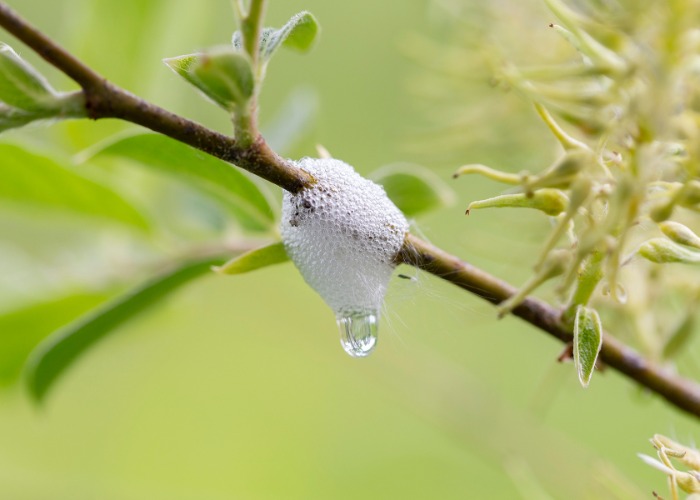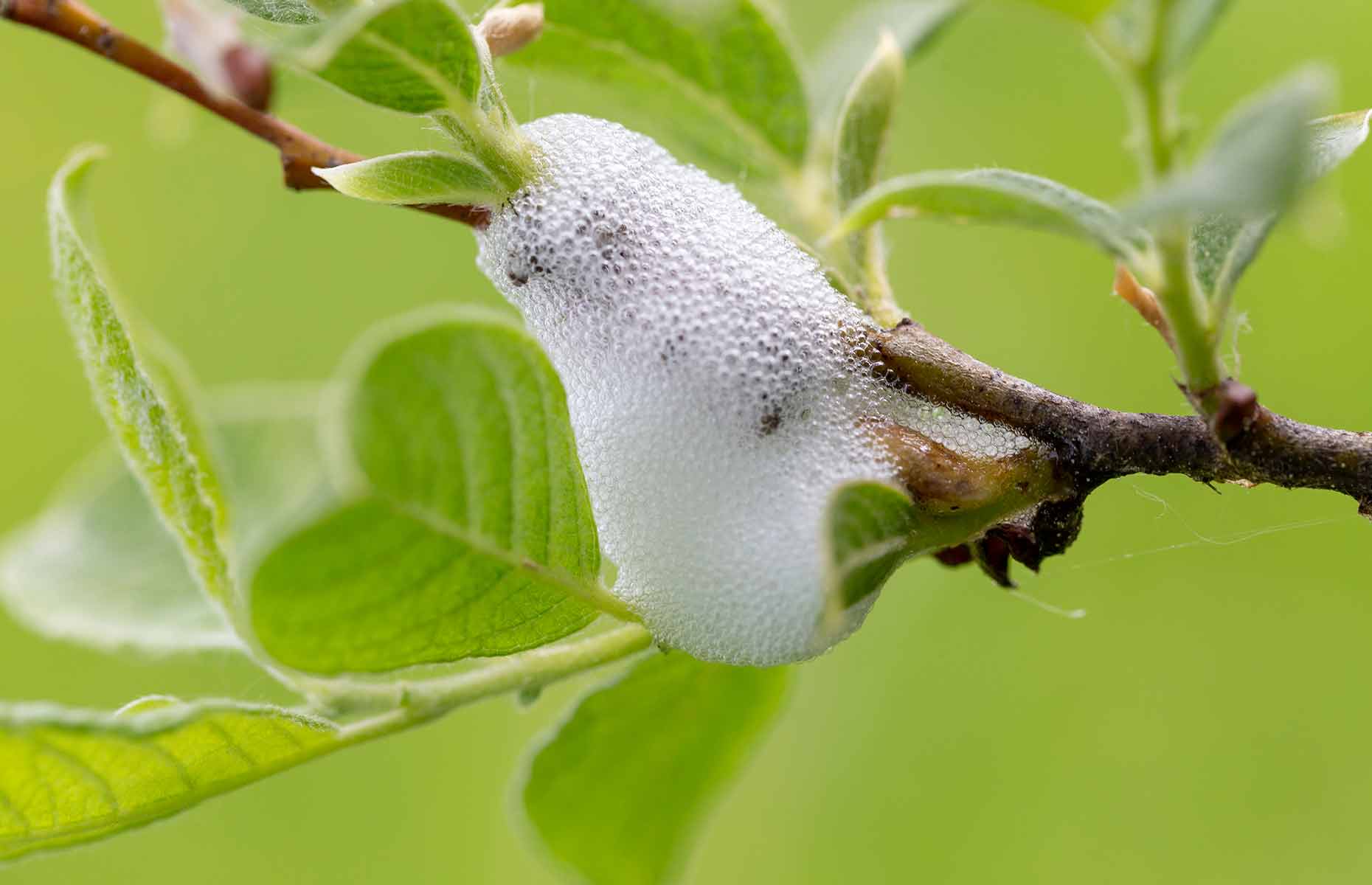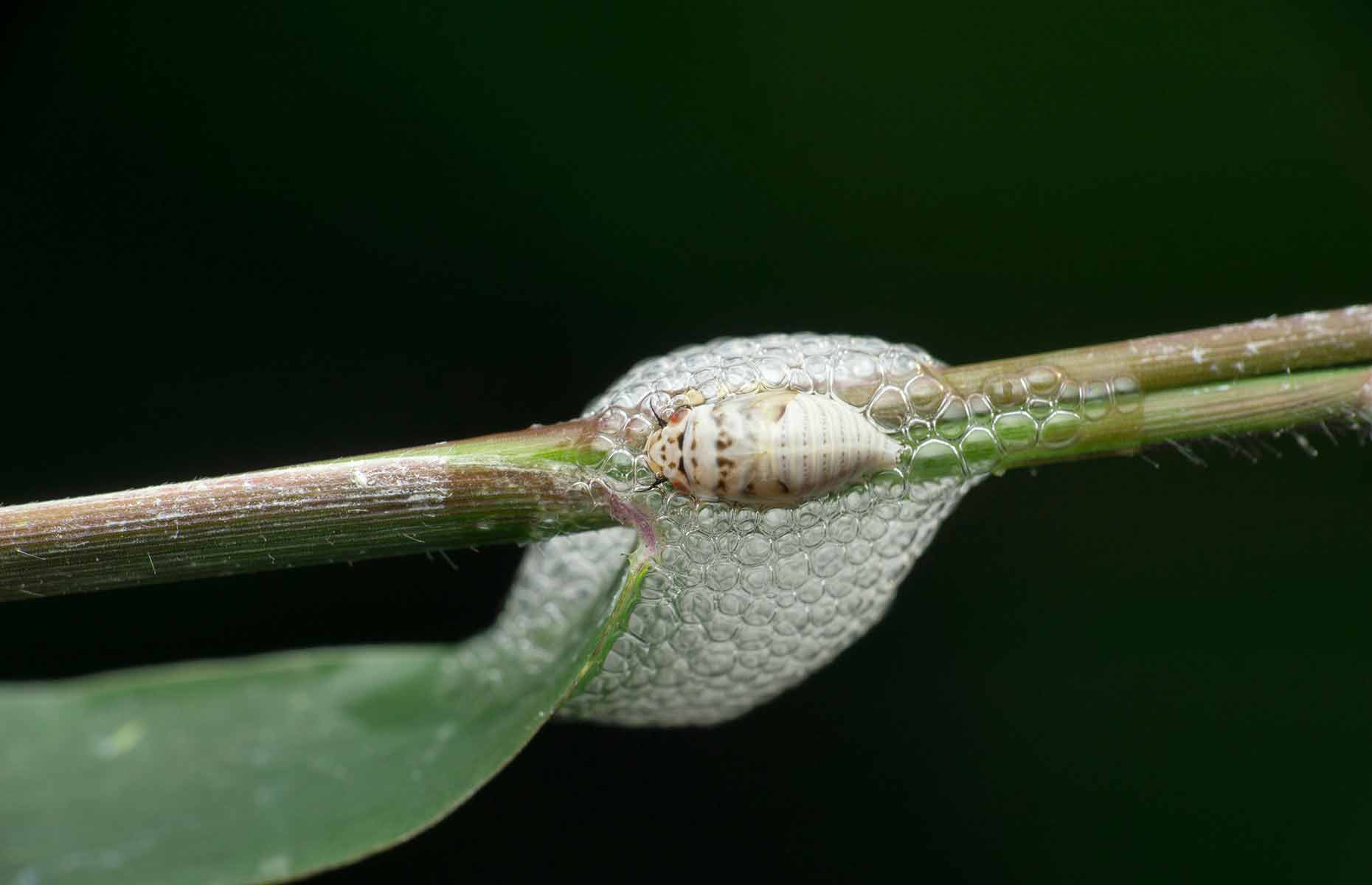Spittlebugs: warning as strange foam appears on garden plants

Scientists are asking people to report sightings of the peculiar froth, which is linked to the spread of a deadly plant disease
As the temperature starts to climb, many of us will be spending more time outdoors. However, gardeners are being urged to watch out for something unusual among their flowerbeds.
READ MORE: 12 garden diseases and disorders – and how to fight back
Clumped on plant leaves and stems, you might have come across a froth-like substance – the tell-tale calling card of spittlebugs.
Although a harmless and common insect, the froth they produce is linked to a deadly plant disease called Xyella and experts are asking for the public's help to monitor its spread.
What is a spittlebug?
Spittlebugs – also known as froghoppers – live on many different plants including chrysanthemum, dahlia, fuchsia, lavender, rosemary, rose and willow.
They are most active from May to July – meaning now is peak season – and there are nine different species of the spittlebug in Britain alone, according to The Royal Horticultural Society (RHS). While they feed on plants, they don't drain enough nutrition from the sap to harm them and they pose no risk to humans or pets.
The white froth they often leave on plants is known as cuckoo spit or spittle as it appears in spring when cuckoos are commonly heard. The spittlebug nymphs cocoon themselves in this liquid to protect themselves from predators while they feed. But why are scientists tracking their habitats?
 The tell-tale balls of foam are usually found on the leaves and stems of plants.
The tell-tale balls of foam are usually found on the leaves and stems of plants.
Image: Ihor Hvozdetskyi / Shutterstock
Why is cuckoo spit dangerous to plants?
The foam itself isn't inherently dangerous, but spittlebugs can act as carriers of the Xylella bacteria, which causes a deadly plant disease that could wipe out more than 650 native UK plant species.
According to the RHS, the disease is spread by insects that feed on the xylem (vascular tissue) of plants causing symptoms that include leaf scorch, wilt, dieback and plant death.
The European Commission deems Xylella as "one of the most dangerous plant bacteria worldwide" and the disease has devastated olive groves in Italy in the past few years, as well as citrus trees and grapevines.
Although not yet found in the UK, its recent spread through Europe has led to the horticultural industry and the UK government taking measures to try to prevent the arrival of Xylella.
If the bacteria were to be discovered on UK soil, all plants within a 100-metre radius would have to be destroyed and a five-kilometre plant quarantine imposed for up to five years, as reported by the Daily Mail.
What does cuckoo spit look like?
In the late spring and summer months, you may start to notice small blobs of a bubble-like foam on plant leaves and stems, where the spittlebug nymphs feed. The small insects will be up to a quarter of an inch long.
 Spittlebugs vary in colour from pale brown to black. Image: RealityImages / Shutterstock
Spittlebugs vary in colour from pale brown to black. Image: RealityImages / Shutterstock
After about a month, the nymph turns into an adult insect that leaves the spittle. Adult froghoppers can fly and jump impressive distances from plant to plant.
What to do if you spot spittlebugs in your garden
Firstly, remember that spittlebugs are not a pest and do not need to be removed or treated with insecticides. As the RHS states, these insects should be tolerated as part of the biodiversity in your garden.
You may gently dislodge them from plants if you must, with water or by hand. While they pose no threat to your plants, you will be helping scientists by monitoring your garden for signs of the insects.
The RHS, in partnership with other organisations, previously founded the BRIGIT project, which focused on monitoring and responding to the threat of Xylella. Households were asked to report spittle sightings from gardens or the countryside through an online survey.
"You can help out from the comfort of your garden: if you see spittle or spittlebugs let us know where and what sort of plants you found them on,” said Dr Gerard Clover from the John Innes Centre.
This will help the UK draw up a plan to respond to an outbreak, should the Xylella bacterium arrive in the UK.
READ MORE: 13 common garden pests and how to treat them
Featured image: Ihor Hvozdetskyi / Shutterstock
Comments
Be the first to comment
Do you want to comment on this article? You need to be signed in for this feature